@KillingTime Vielleicht könntest du ein Beispiel für "Putins Propaganda" nennen, nur um dem Thread etwas Substanz zu verleihen.
Gerne.
:)Vorher möchte ich aber unbedingt nochmal klarstellen, worum es mir hier eigentlich geht.
Ich will hier kein einseitiges Putinbashing betreiben, sondern nur darauf aufmerksam machen, dass man immer beide Seiten der Medaille betrachten muss.
Ganz klar! Tendenziöse und einseitige Berichterstattung gibt es auch in deutschen und anderen westlichen Medien!
Aber wenn man schon Medienkritik betreiben will, dann sollte man das auch mit einem gerüttelt Maß an ganz nüchterner Objektivität machen. Daran scheint es mir aber in vielen Beiträgen auf Allmy und auch auf anderen Plattformen derzeit erheblich zu mangeln. Medienkritik bedeutet nun mal nicht, all das als Lüge hinzustellen, was der persönlichen politischen Anschauung widerspricht und im Gegenzug alles als unumstößliche Wahrheit hinzunehmen, was die eigene bisherige Meinung bestätigt!
Man sitzt dann nämlich nur all zu gerne einem Confirmation Bias auf bzw. betreibt bloßes Cherry-Picking. Nur deswegen will ich hier über die Propaganda Putins aufklären. Hätte es hier und anderswo schon immer eine ähnlich undifferenzierte Front gegenüber russischen Medien gegeben, dann hätte ich vielleicht irgendwann einen Thread mit dem Titel "Westliche Medienpropaganda" oder so ähnlich erstellt.
Weil das aber bisher nicht der Fall war, soll es hier auch in Zukunft nur um russische Propaganda und deren Einflussnahme auf die Medien gehen!
Wie von
@KillingTime gewünscht, hier mal ein paar Beispiele für russische Desinformation und Propaganda:
22 acts of disinformation. The Russian media on Ukraine
It is now well-known that Russian agencies, such as the ‘Internet Research Agency’ in St. Petersburg shown below, operate networks of commentators whose job is to post articles, maintain Facebook accounts, and write comments on Internet sites. Besides running armies of trolls, the agencies also have departments that specialize in subjects like ‘Rapid response,’ ‘Creative work,’ and ‘Social networks.’ They employ hundreds of people across Russia at an average annual salary of around $35,000 (See: http://www.novayagazeta.ru/politics/59889.html). The operators are assigned the job of praising Putin, defending Syria, condemning opposition leaders like Alexei Navalny, and pouring scorn on the US and EU. It is believed that many Twitter accounts are operated by the Russian secret services (http://www.buzzfeed.com/maxseddon/documents-show-how-russias-troll-army-hit-america).
These agencies also work to influence Russian opinion against Ukrainians. As the following examples show, one of their tasks is to spread disinformation by twisting stories and images to suit a predetermined narrative, and by spreading inflammatory and entirely unfounded reports of atrocities.
http://www.ukrainianwinnipeg.ca/22-acts-disinformation-russian-media-on-ukraine/Ich habe aus den 22 Beispielen nur mal diejenigen ausgewählt, die ganz offensichtlich sind und die man auch relativ leicht selber überprüfen kann:
1. Cheating with photographs is one of the most easily exposed tricks employed. Below left, Dmitry Kiselev, who has been described as the most influential force in Russian TV, is seen giving a report over a headline that reads ‘Banderites and Right Sector Want War.’ To prove his point the screen in the background displays a photograph of Ukrainian demonstrators carrying a banner with the words ‘We Want War.’ On the right one can see what was cut out of the photograph. The banner actually read ‘ We Do Not Want War.’
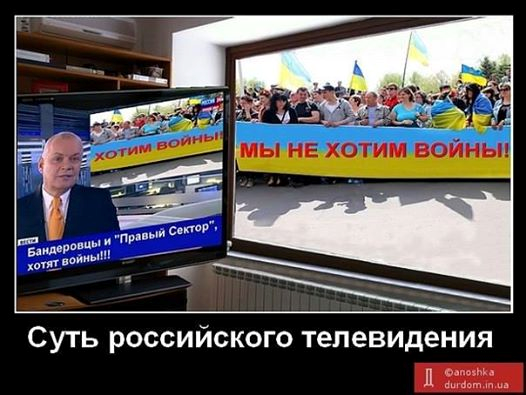
2. Here is another fabrication. The photograph on the left is allegedly of a bombed building in Sloviansk. On the right is the original photo, which was published in 2010 and, it turns out, was of a building in Serbia.

3. Russian media outlets provide many examples of such deceit. A TV channel (RIA News) claimed recently that the Ukrainian army was using a UN helicopter in Donetsk and published the image (below left) as proof. It was in fact a photograph of a UN helicopter in the Ivory Coast that was taken in 2011.

4. This next photo is of the 2013 Lac-Mégantic derailment in Quebec, Canada. It was presented as ‘Sloviansk burning’ in 2014.

5. Video clips are also frequently manipulated. Below are two, both of a dead soldier’s mother speaking to the media. The first clip, which was aired on Russian TV on 14 May, presented her as calling upon the ‘Kyiv junta.’ However, a quick YouTube search using the words ‘mother of slain slodier makes an address’ (‘обращения матери убитого военного’) reveals that in the tape the mother in fact calls upon President Vladimir Putin to stop military action in Ukraine.
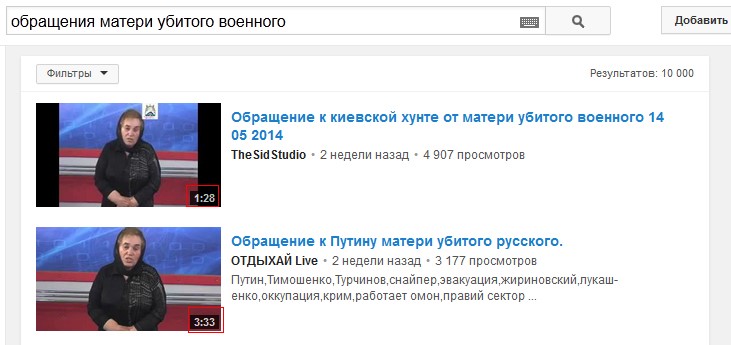 Spoilerhttp://www.youtube.com/watch?v=K0Wpfoa_utE
Spoilerhttp://www.youtube.com/watch?v=K0Wpfoa_utE

Обращение к В Путину матери русского, убитого русскими наёмниками в Славянске mpg
Externer Inhalt
Durch das Abspielen werden Daten an Youtube übermittelt und ggf. Cookies gesetzt.
Das hier erwähnte Video hatte ich selber auch schon im Ukrainethread auf Allmy gesehen:
7. The same technique of misattribution is used in a tape presenting alleged mass killings by the Ukrainian army in the Donbas that shows troops throwing bodies out of a military transport vehicle.
The tape was in fact made in Dagestan and aired in November 2012. Originally entitled ‘Public brutality of the occupiers,’ it demonstrated how Russian special operations men dealt with the bodies of Chechens and Dagestanis.

In Wirklichkeit wurde es nicht in der Ukraine aufgenommen, sondern im November 2012 in Dagestan.
This particular deception was so obvious and embarrassing that it caused a backlash. Dmitry Kiselev was forced to go on TV and admit that a ‘mistake’ had been made. He stated that the clip from Russian TV Channel 1 had ‘mistakenly’ described the Ukrainian national guard as killing civilians, when in fact it recorded Russian anti-terrorist actions in North Caucasus on 18 November 2012.
Zum nächsten Punkt eine kleine Info am Rande: Ken Jebsen hatte ganz frech behauptet mit dem frei erfundenen Igor Rozovsky persönlich kommuniziert zu haben.
;)9. The ‘Right Sector’ is a favourite boogeyman of the Russian press, and seems to appear everywhere. One report has the ‘Right Sector’ deliberately murdering Jews in Odesa during the events of 2 May, and of preventing the wounded in the trade Union building from receiving help. Russian Facebook spread the story (later removed) of a doctor named Igor Rozovsky, who claimed that he was prevented by fighters from attending to the wounded. One fighter allegedly stated that ‘all Jews in Odesa’ would suffer the same fate.
The truth is that no such doctor exists in Odesa and the photo in the report is that of a dentist called Ruslan Khadzhi-Muratovich Semenov, who works in Ust-Dzhegutinsk dental clinic in Russia’s Karataevo-Cherkesk Republic. The ‘Rozovsky’ facebook account was created on 3 May and then removed after the information had been spread through the Internet. Here is his phoney facebook picture.
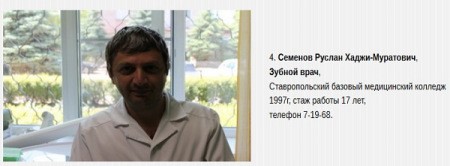
The pseudo-doctor is reported as saying: ‘In my own town something happened that could not have happened even during the Nazi occupation.’ His post received more than 2000 shares in just 15 hours. Russian propaganda services first spread this information through large networks of bots and several popular Internet communities. Translations of the posting appeared in several languages. The translations — whether into German, English, or Bulgarian – were all identical. An effort was also made to actively disseminate the information across Jewish social media.
13. In late March Russian TV reported congestion at border crossings into Russia as people tried to leave Ukraine. Russian TV Channel 1 reported that for two weeks crossings into Russia had been crowded with 140,000 people escaping eastern and western Ukraine, the ‘junta,’ and ‘Right Sector.’
In reality, there had been no change in the volume of people moving across the border. The photograph (below) was of a border crossing into Poland and not Russia.
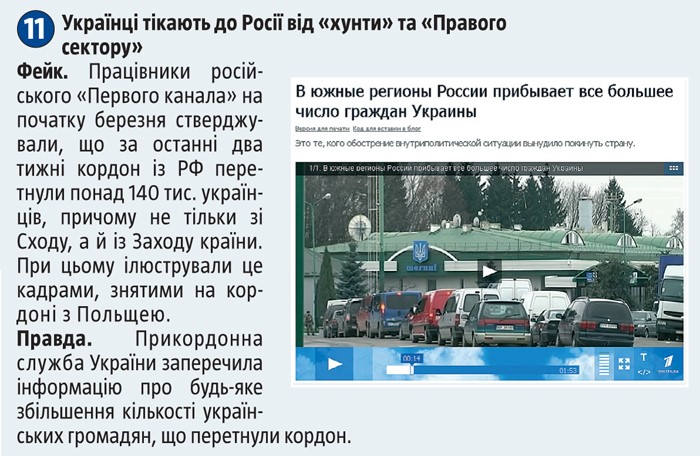
20. On 27 May 2014 Russian bloggers and social media spread the image of a young girl sitting by a dead woman, suggesting that the photo was taken in the Donbas.

In fact, it was taken from a poster advertising the Moscow International Film Festival, which took place 23 June to 2 July 2011 (see below).

21. On 17 May a photo was circulated in the Russian media showing dead Ukrainian soldiers, national guardsmen and men of the ‘Right Sector’ in the Sloviansk morgue. It was reported that they were to be buried without identification. The photo was in fact from an Associated Press story that aired on 18 February 2009. It is of a morgue in Mexico and shows victims of a fight between drug cartels.
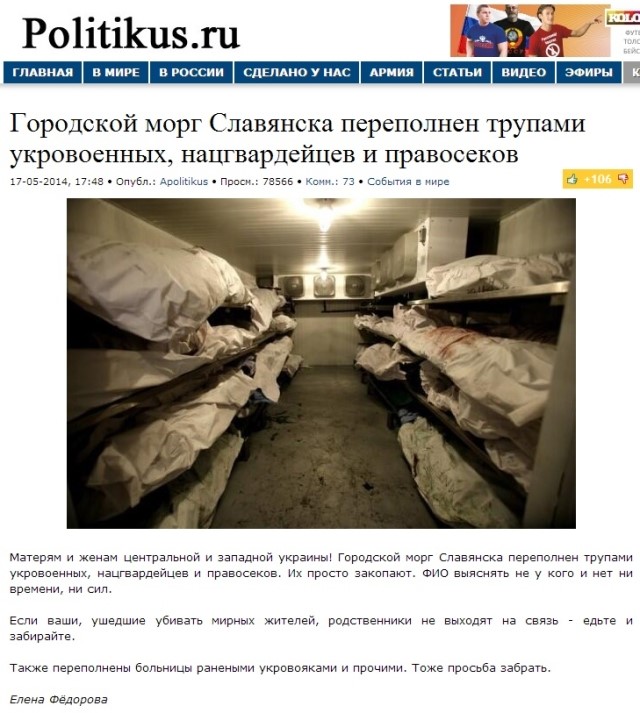

Das sollte erstmal reichen!
Was aber nicht bedeutet, dass ich nicht noch ein Fülle von weiterem Material, auch von anderen Seiten liefern könnte.
;)
def schrieb:Du zahlst nur dann Kirchensteuer auf den Soli wenn du auch in einer Kirche bist... solltest du Kirchensteuer vom Arbeitslohn abführen wirst du beim Finanzamt mit einen Kirchenzugehörigkeit geschlüsselt sein.



















